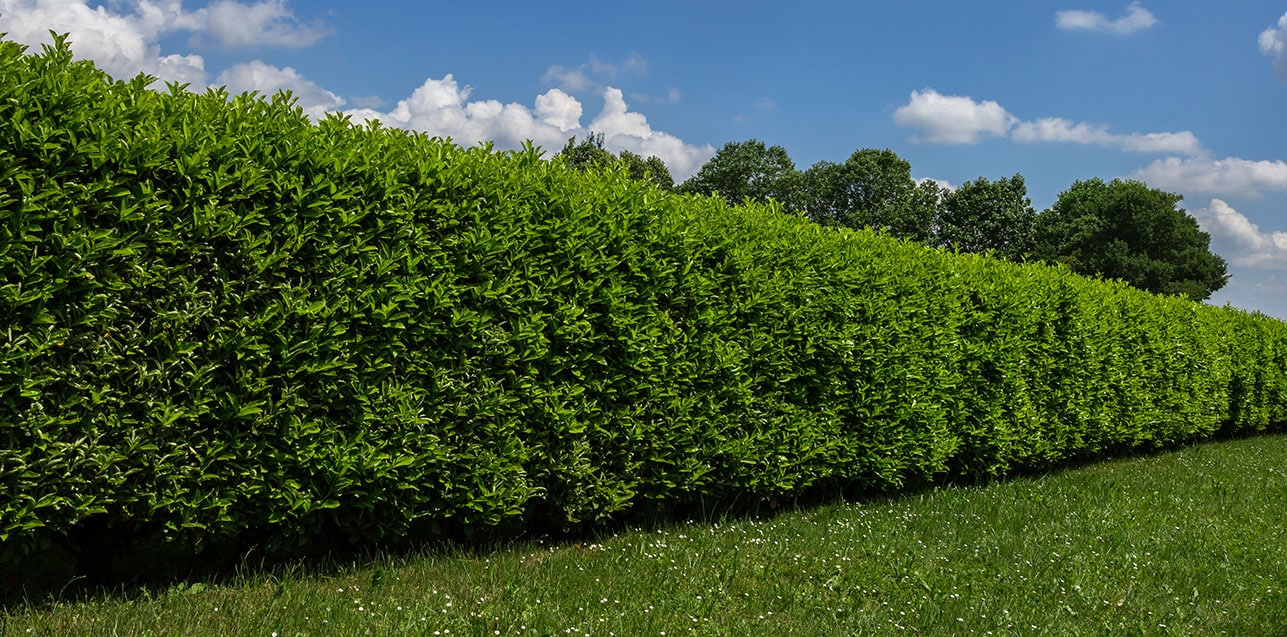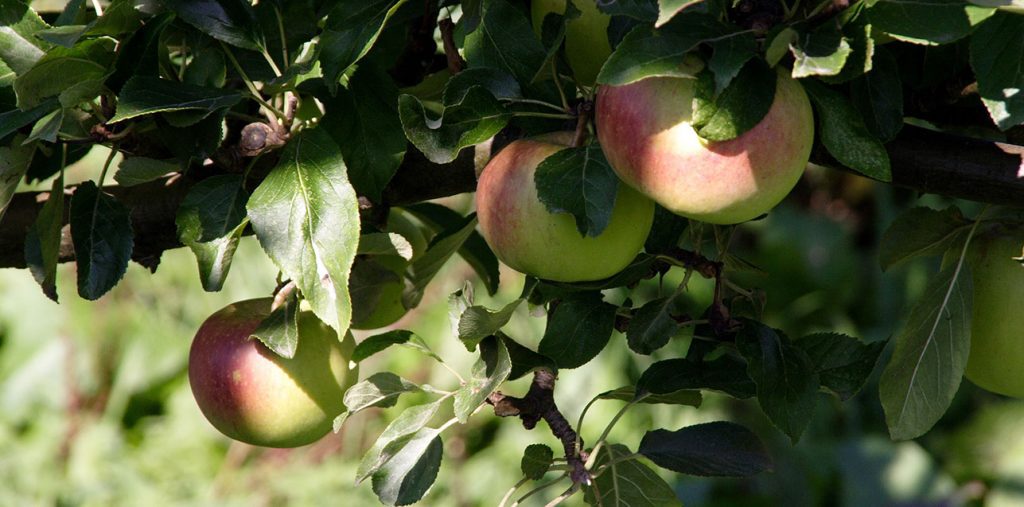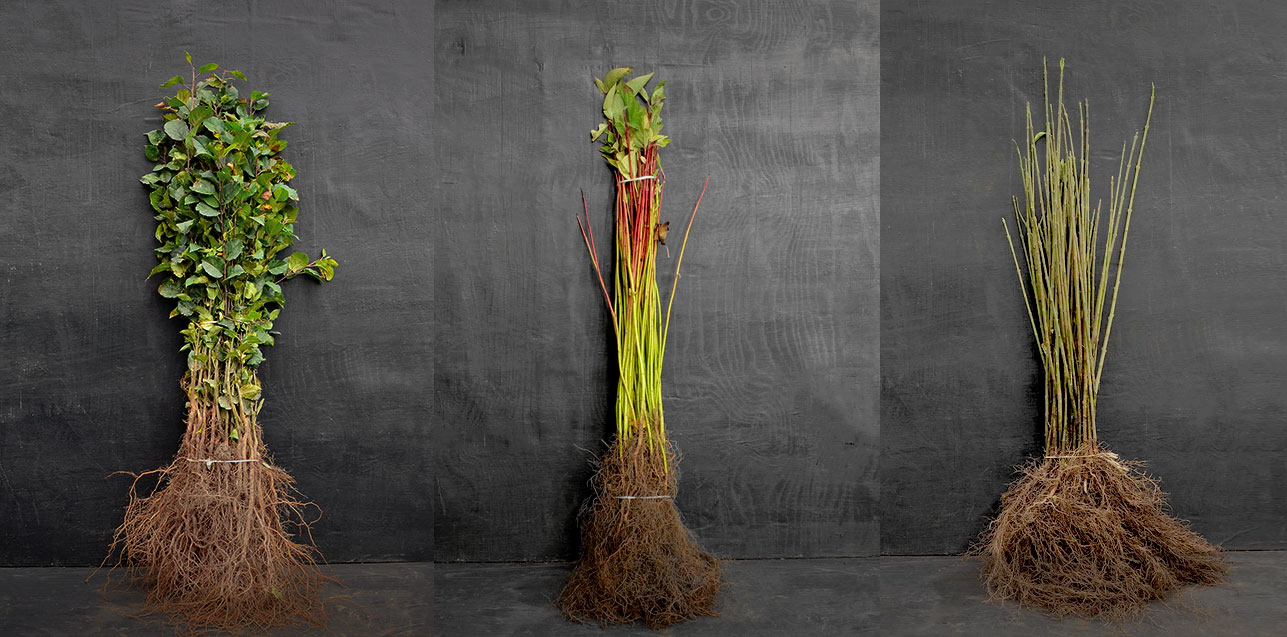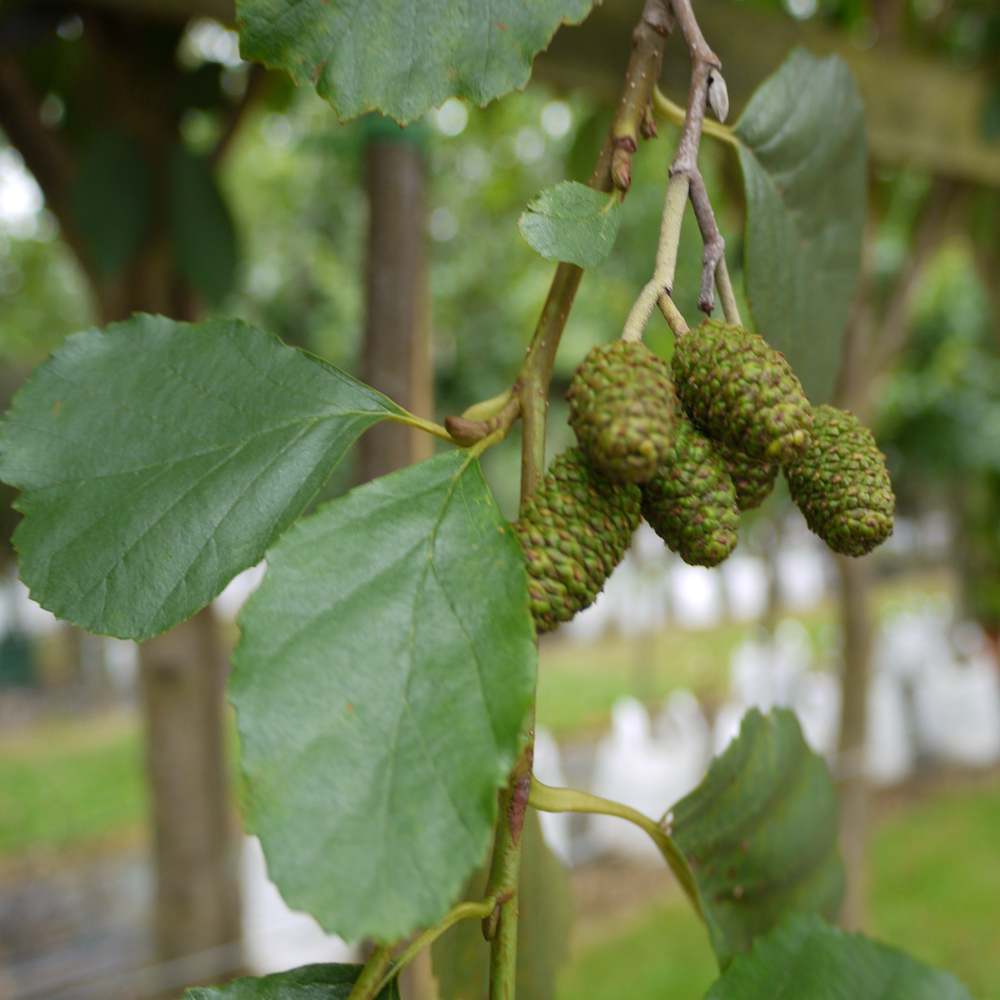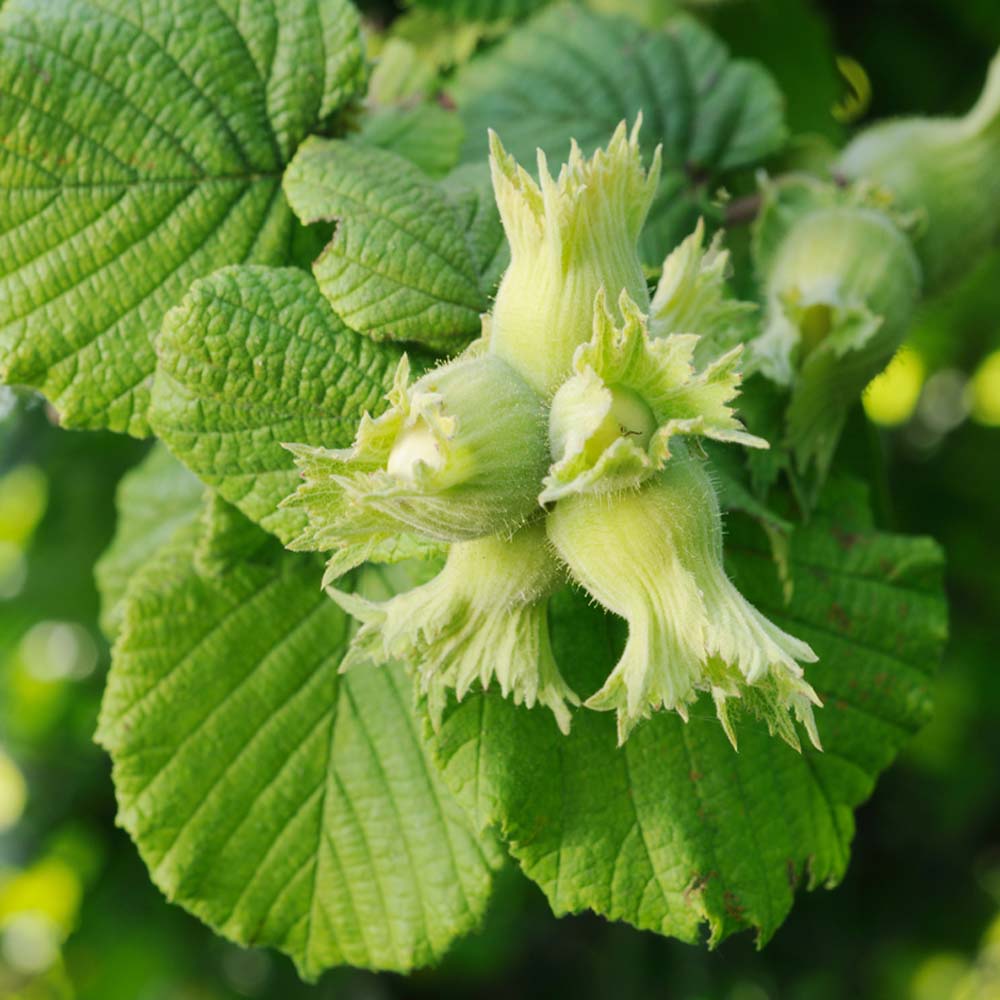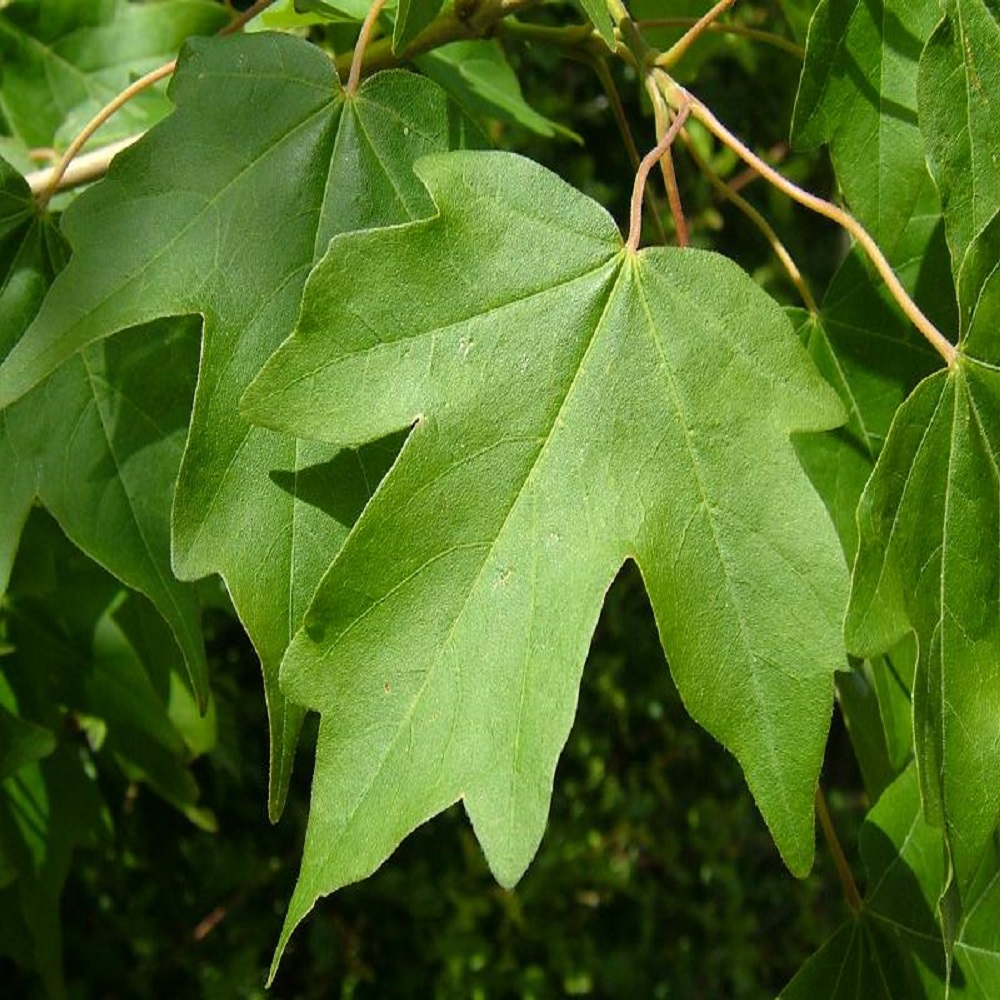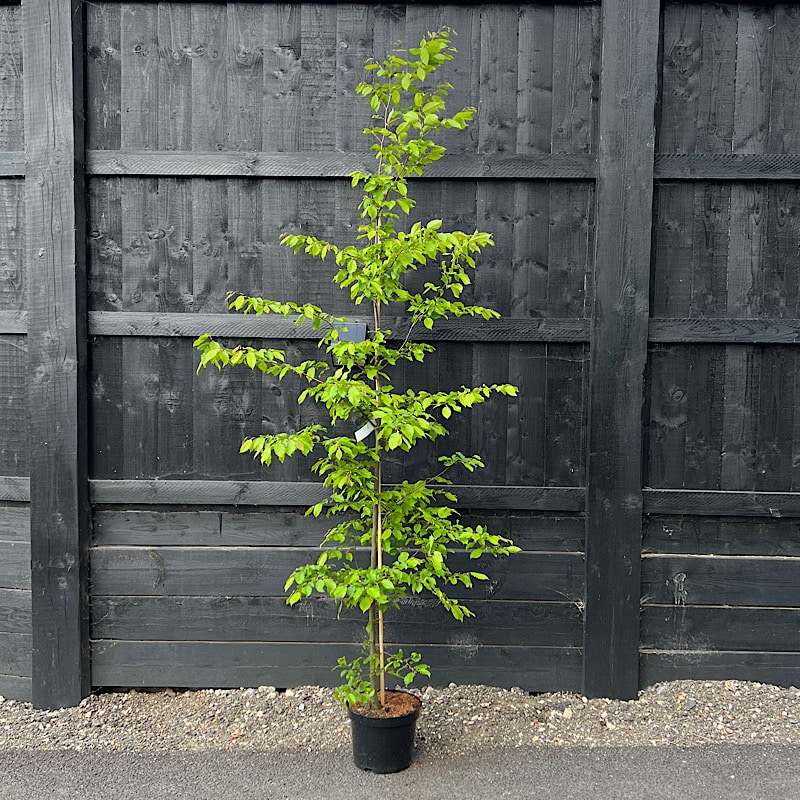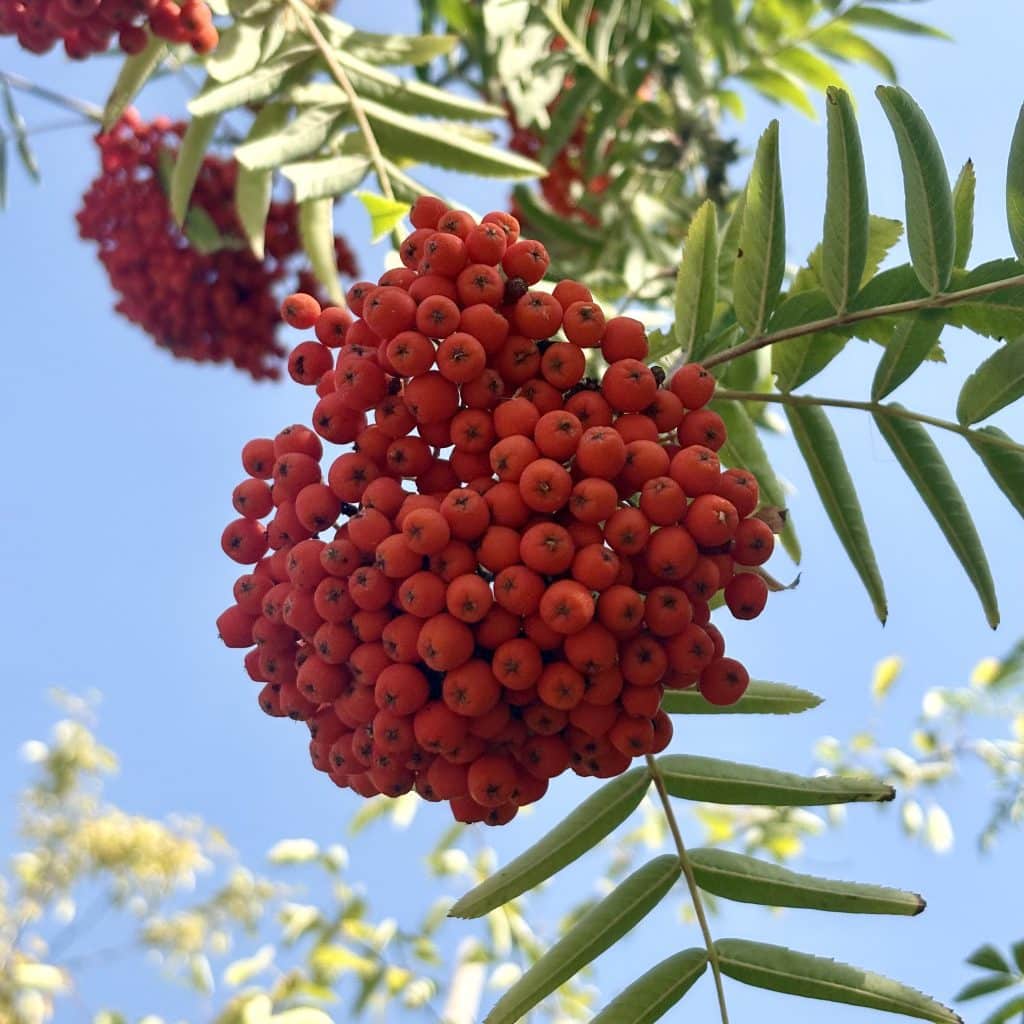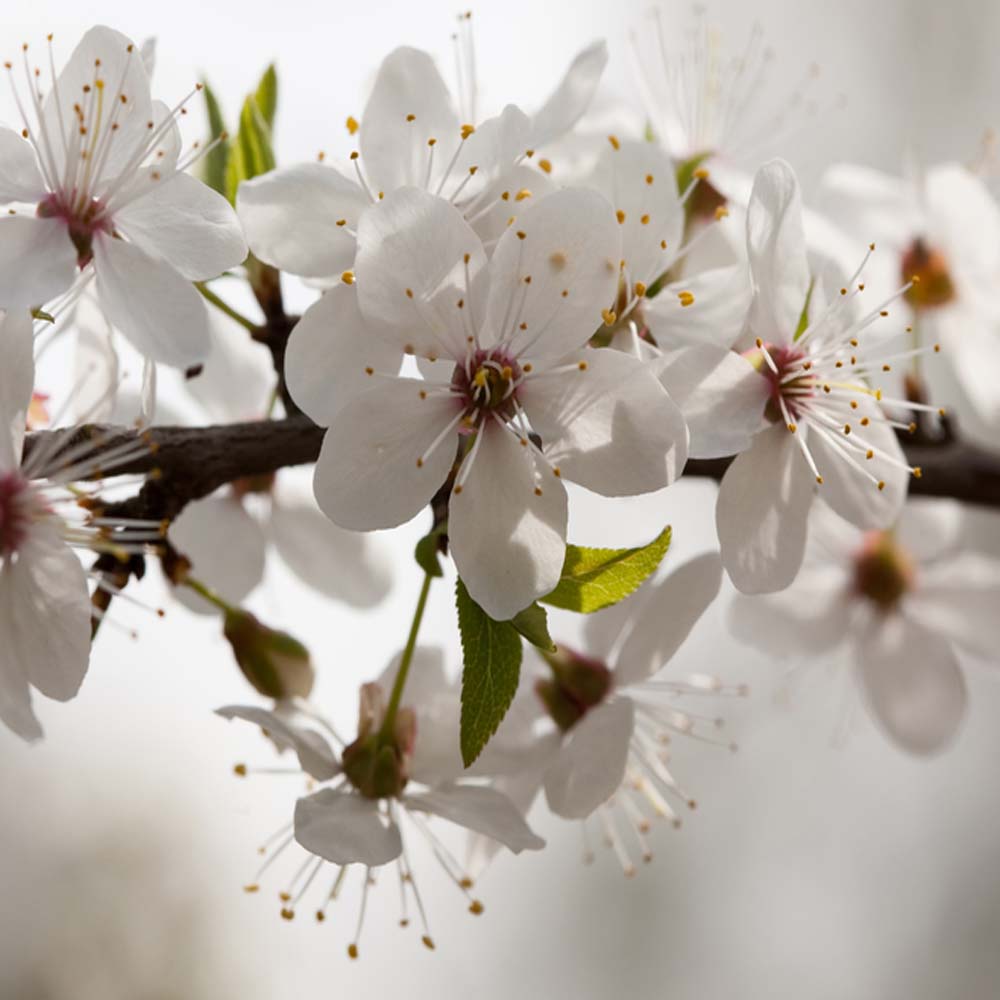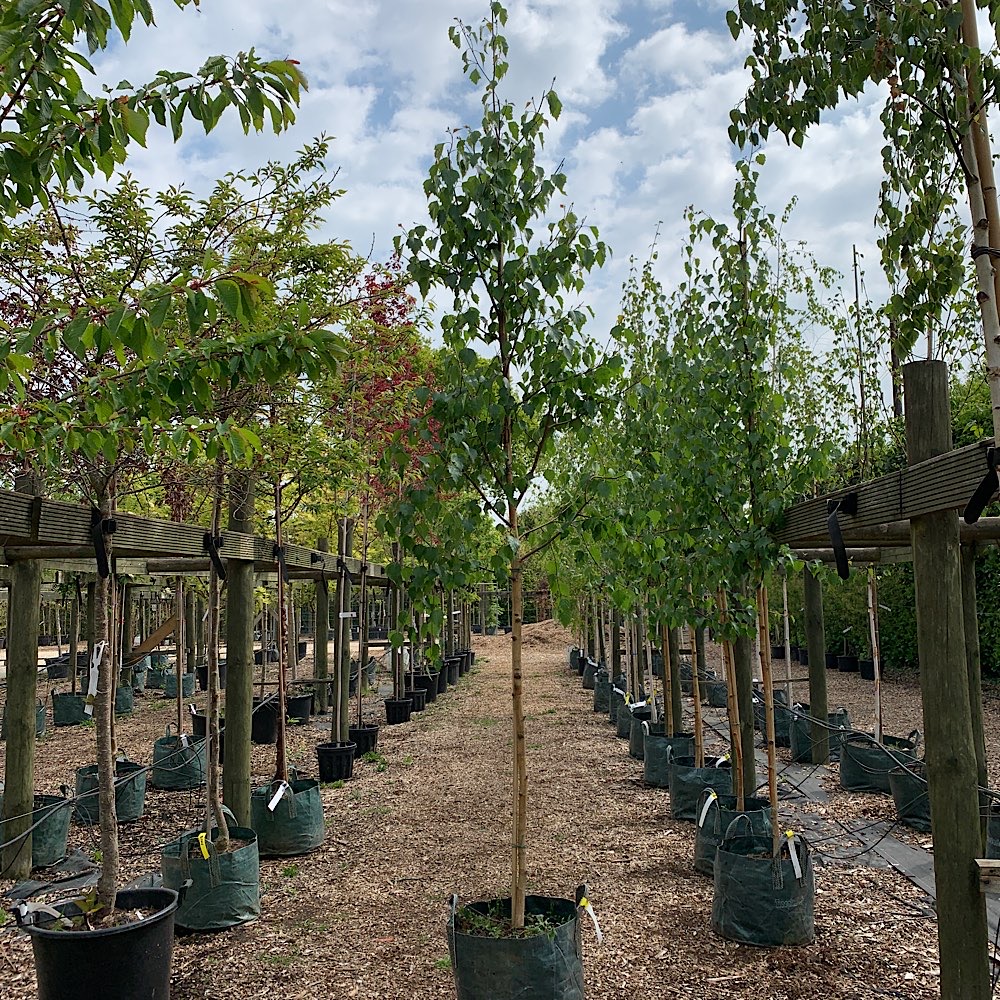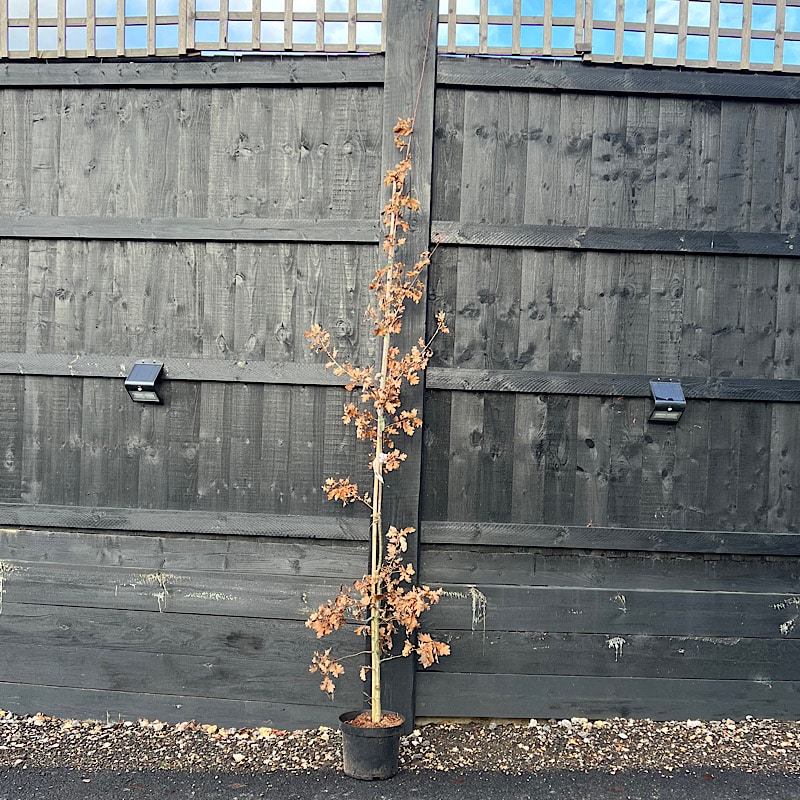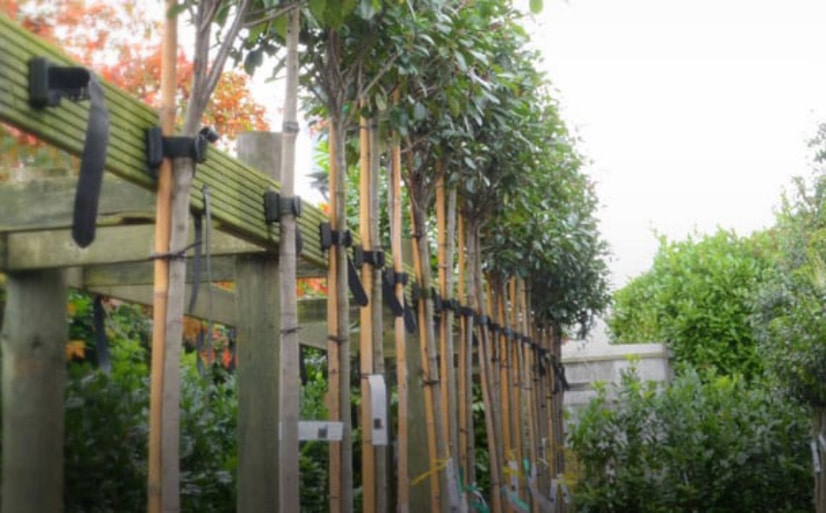Native trees are species that have naturally established in the UK. They’ve adapted to the climate and environment over thousands of years. Choosing them is a great way to celebrate the beauty, character and biodiversity of Britain’s flora. Plus, they often match the local landscape. This helps them blend easily into their surroundings. Want to plant native? Check out our top 10 native trees!
10. Alnus glutinosa (Alder)
Common alder thrives where other trees struggle. It handles poorly drained soils and wetter areas, making it perfect for riversides, wetlands and coastal spots. Its roots also help stabilise banks, while its catkins and leaves support a wide range of wildlife.
9. Corylus avellana (Hazel)
Hazel is a firm favourite for both people and wildlife. Its nuts provide food for birds and small mammals, while its dense branches offer great shelter. It’s also easy to coppice, making it ideal for traditional woodland management. Whether in hedges, gardens, parks or woodlands, hazel adds structure, life and seasonal interest to any space.
8. Acer campestre (Field maple)
Field maple is the UK’s only native maple, and it’s as versatile as it is attractive. It works well in medium to large gardens, parks and woodlands, offering golden autumn colour and dense, wildlife-friendly foliage. You’ll also spot it in hedgerows across the countryside!
7. Fagus sylvatica (Beech)
Beech offers year-round interest. Its leaves often stay on the tree through winter, giving great seasonal cover. Green beech has glossy, bright green leaves that turn orange and brown in autumn. Purple beech leaves shift from greenish-purple in spring to deep copper and red by late autumn!
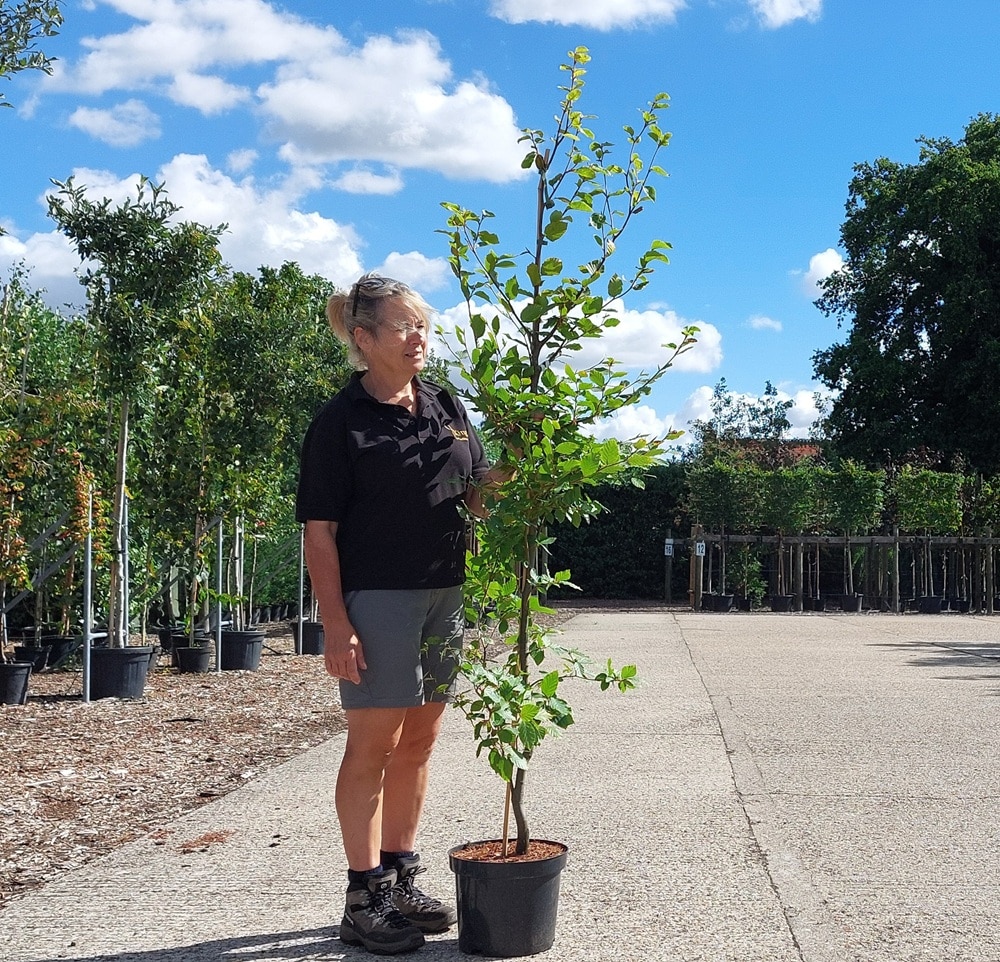
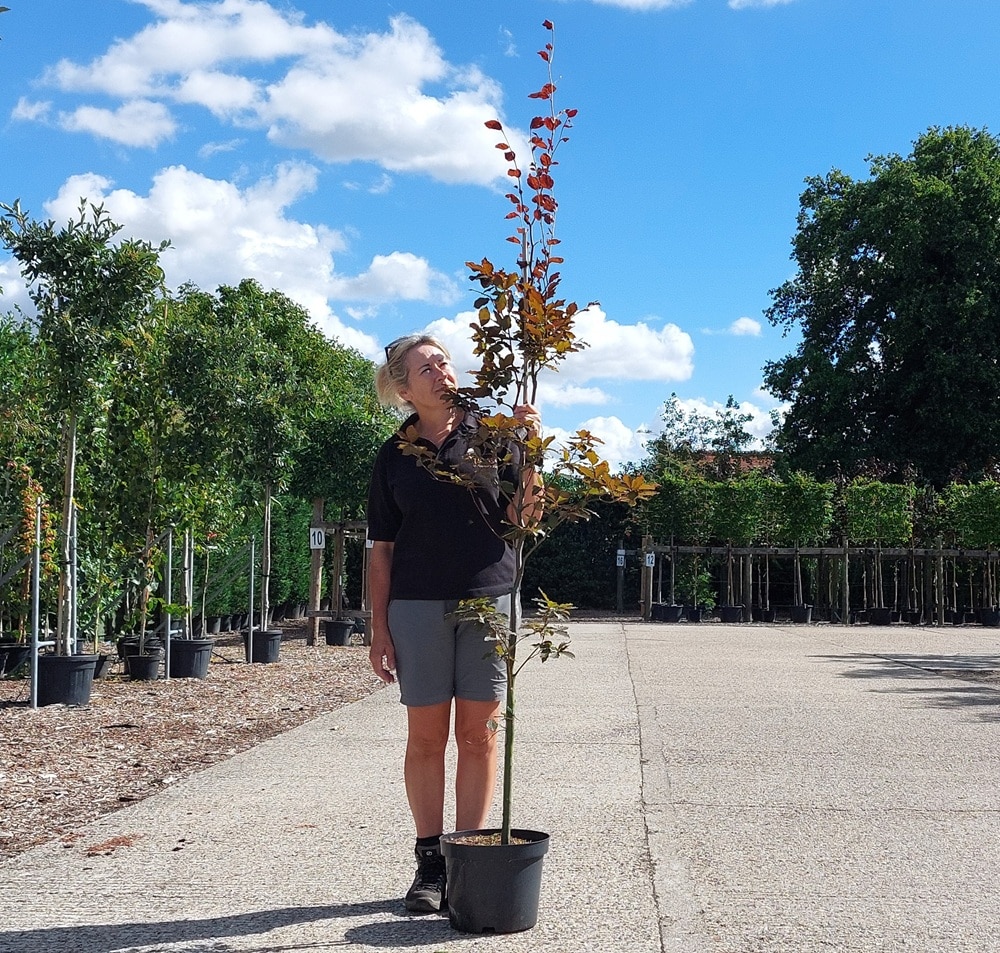
6. Carpinus betulus (Hornbeam)
Like beech, Hornbeam keeps its leaves through much of the winter, offering reliable cover in colder months. It’s a popular choice for hedging and screening, and works well in both woodlands and open spaces. Even better, hornbeam thrives in clay soil, making it a tough and versatile option for tricky sites.
5. Malus domestica (Fruiting apples)
Three of our favourite native fruiting apples are the Bramley, Cox’s Orange Pippin and Discovery. Each offers delicious fruit and classic British character. Our fruit trees are grown on a semi-dwarfing rootstock (MM106), which produces strong, healthy trees that reach a manageable height of around five metres (perfect for gardens and orchards).
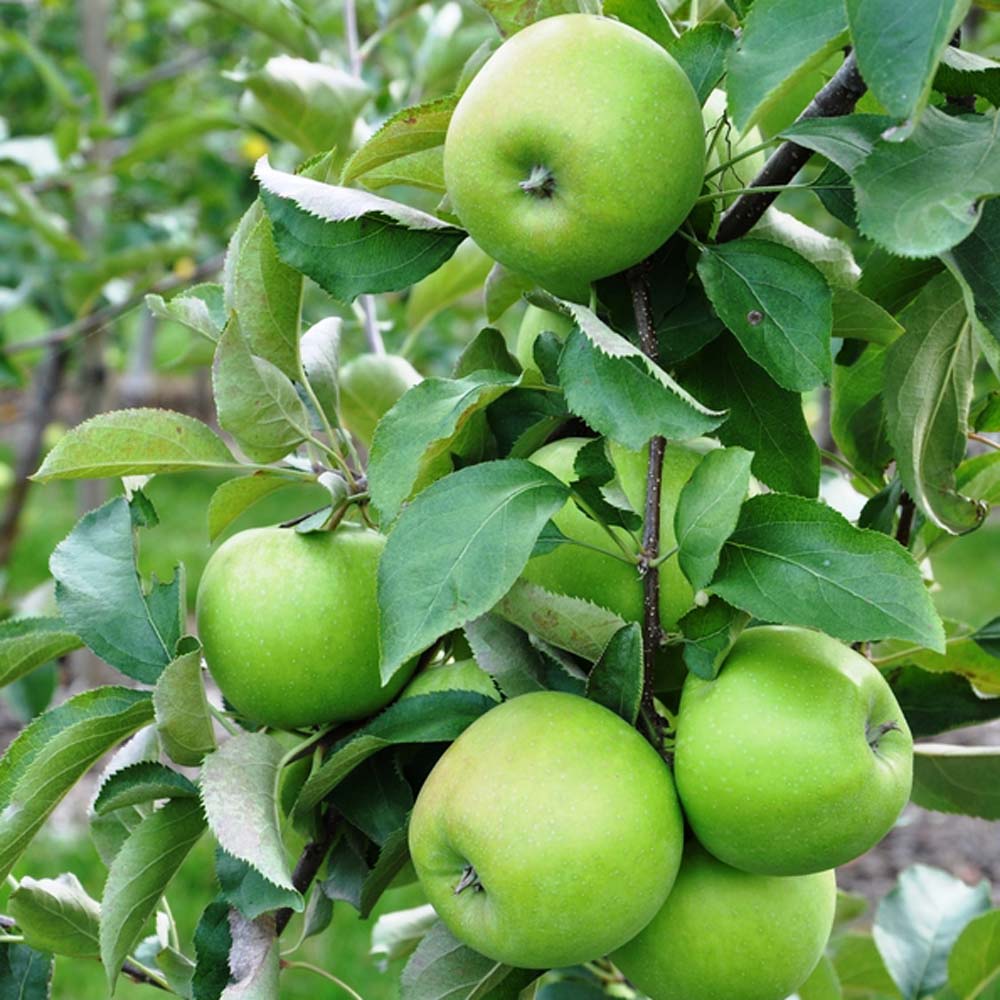
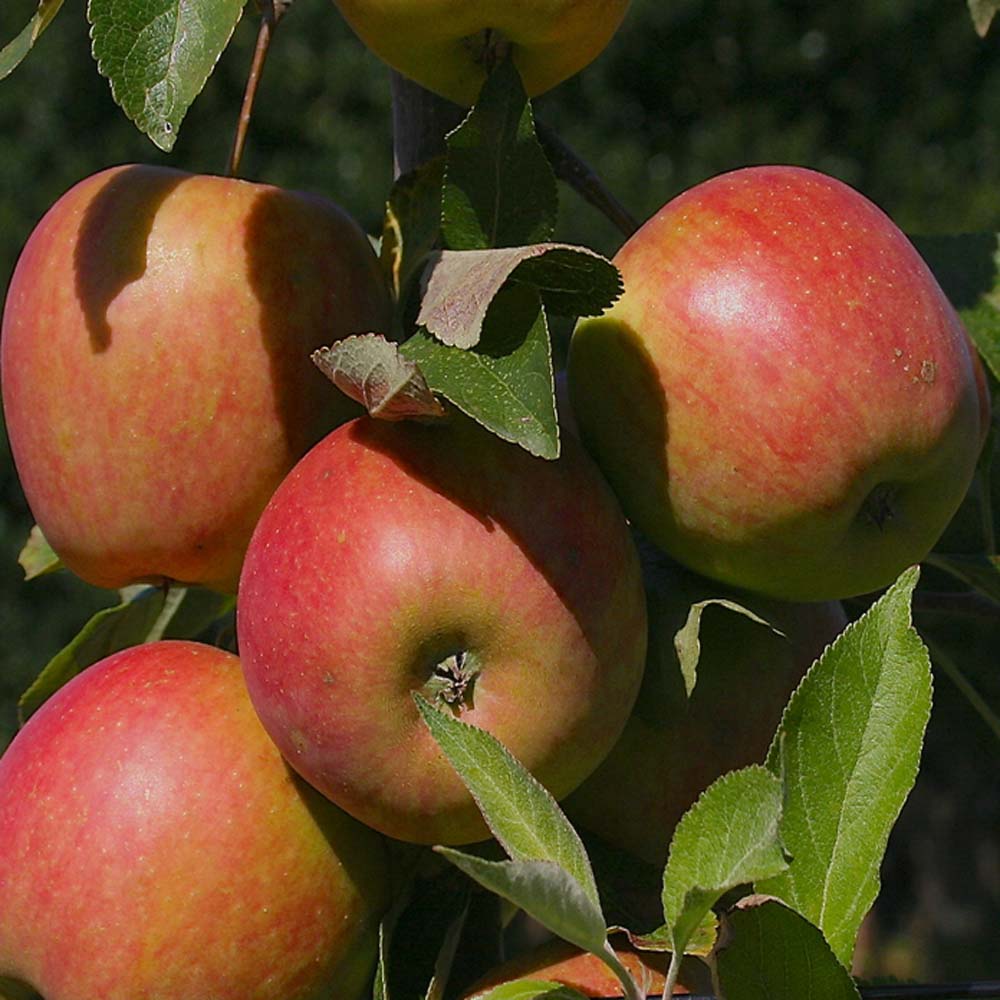
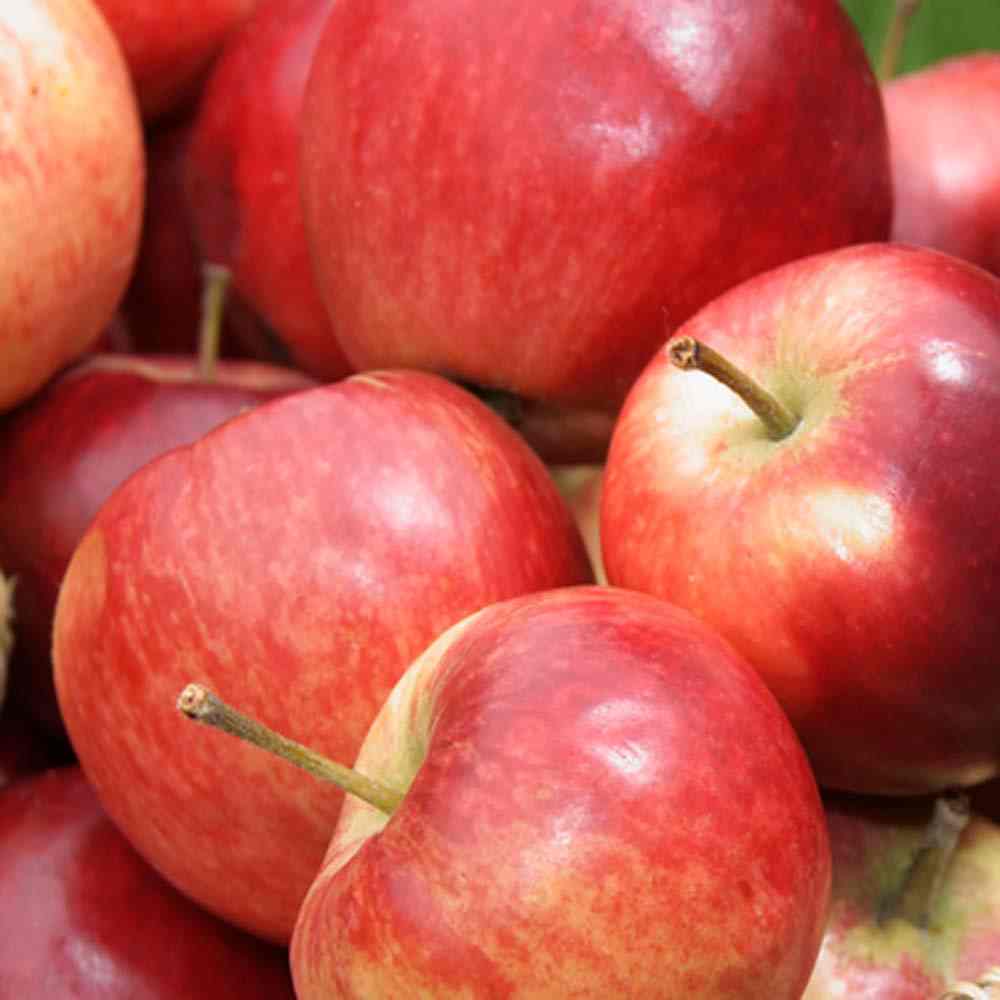
4. Sorbus aucuparia (Rowan/mountain ash)
Rowan brings beauty through the seasons. In spring, it’s covered in clusters of white flowers, followed by bright red berries in autumn that attract birds. This hardy native is a versatile choice for adding colour, interest and wildlife value all year round.
3. Prunus avium (Wild cherry)
Wild cherry stands out with its red-banded bark, white spring blossom, and heart-shaped fruit. It’s loved for its stunning seasonal display and is a favourite of both people and wildlife. Plant it for beauty, biodiversity, and a touch of spring interest.
2. Betula pendula (Silver birch)
Silver birch is a graceful tree with striking bark and delicate leaves. This fast growing, elegant tree is very popular in gardens and rewilding projects. Its airy canopy lets light through, supporting a rich variety of wildlife beneath.
Quercus robur (English oak)
English oak is a true British icon. Its sturdy branches and deep green leaves create a majestic presence. This long-lived tree supports hundreds of wildlife species, making it vital for nature. It’s perfect for parks, woodlands and large gardens.
Owing to Oak Processionary Moth (OPM) we are currently unable to stock any Oak over 8-10cm girth!
Read More:
A Guide to Screening Trees: Is Photinia Good for Natural Privacy?
Bare Root Planting Tips: How to establish a native hedge on a tight budget
A Guide to Pleached Trees: How effective are Hornbeam at creating privacy?


